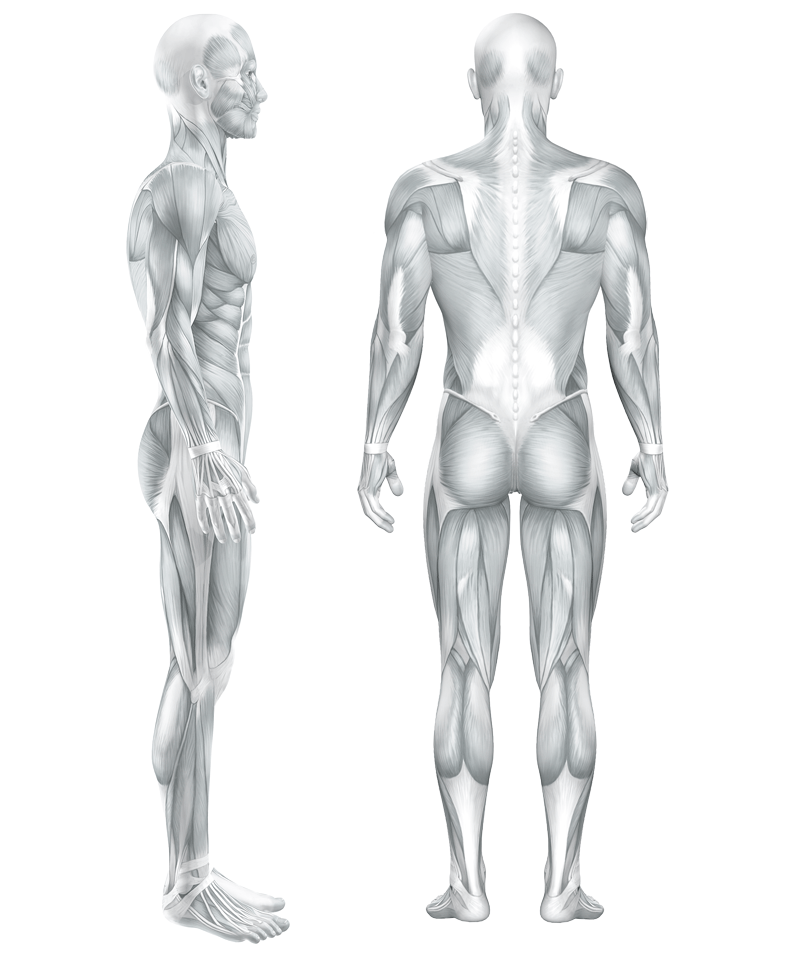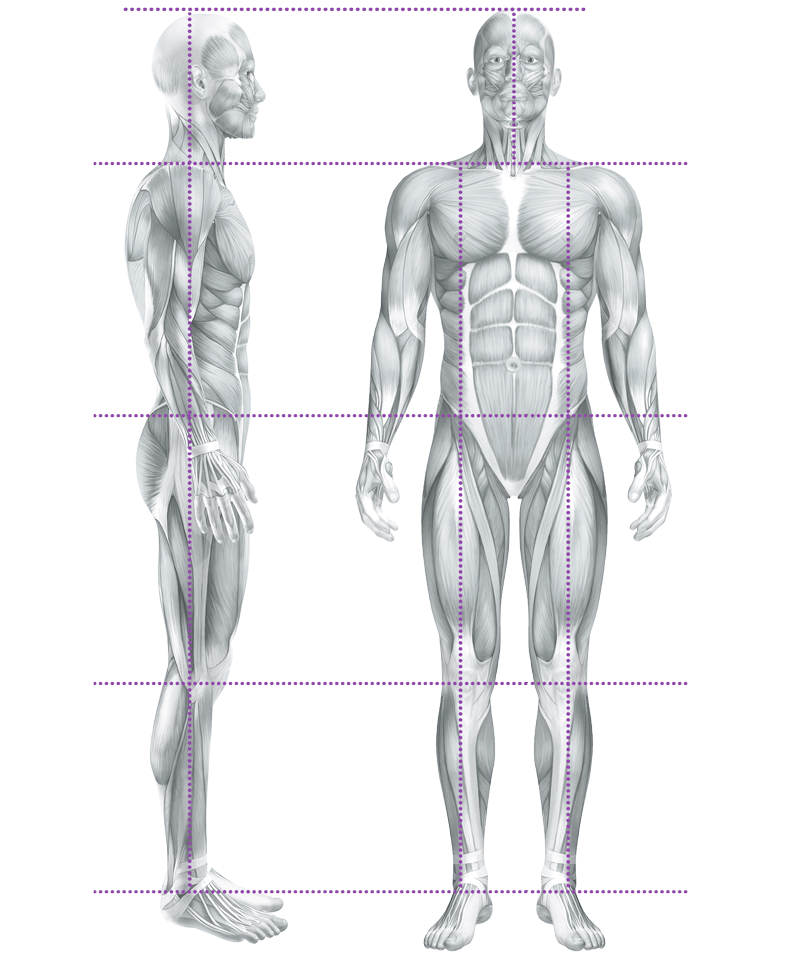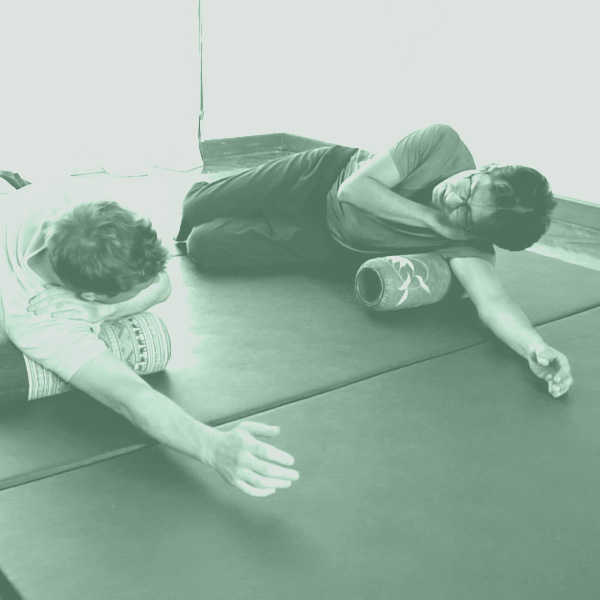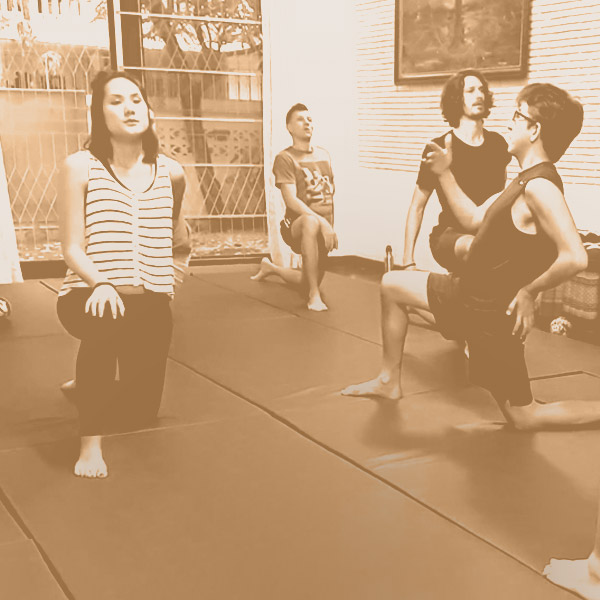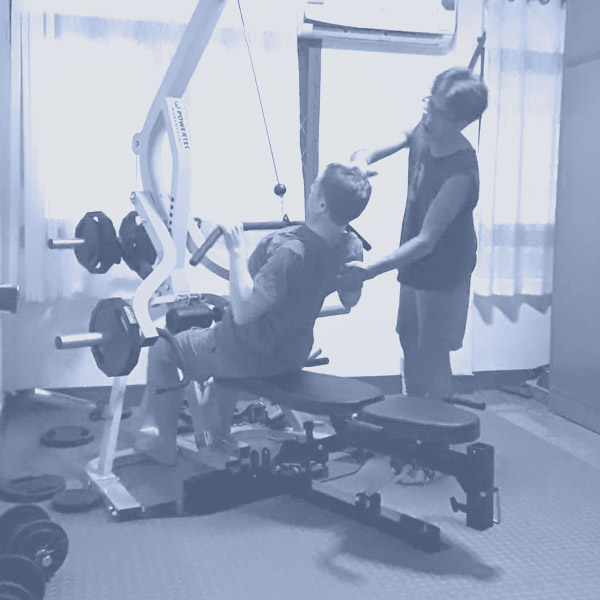Approach
The body is like a garden, requiring time and care to heal longterm orthopedic conditions conditions like low-back pain, shoulder movement limitations, neck impingements, etc.
SEA Bodywork offers a holistic approach to longterm improvement in the structural energy, muscle and fascia, joint mobility and nerve function.
1. Where is the pain?
The first step in our approach for healing the body is for you to share some details about the pain or mobility condition(s) you are experiencing.
The red dots represent pain, body heaviness, weakness, incorrect joint-tracking or other limitations. Some factors that we check in conjunction with the pain are:
-
1
Age and energy levels
-
2
Chronic or recent pain
-
3
Weaknesses or instabilities
-
4
Fractures, surgeries or accidents
-
5
Stress and other life challenges
-
6
Longterm or recent medication
-
7
Work and lifestyle habits
-
8
Any other specific details
⟵ Click on a Pain Area for more information
Headaches
There are many types of headaches. Chronic daily headaches are one type, along with Tension Headaches, Migraines, etc.
Chronic stress typically causes the muscles to contract and remain tense, eventually becoming painful in many cases. The same happens with the overuse of the hand, arm, and shoulder with mobile devices. There are many nerves in and around the Neck and Head, it is very likely that the compression and tension are causing headaches and pain. Dental problems, Ear Conditions, Sinus are also other possible causes for Headache.
Upper Body Conditions
Typical conditions in the upper body are upper back pain and Kyphosis (hunched back), neck pain and limited mobility, trapezius dysfunction, jaw pain and headaches. These are often longterm chronic pains that may go away then return again, mainly because the source of the pain is actually coming from all the areas below. This area is the top of the pyramid and usually hurts the most when affected.
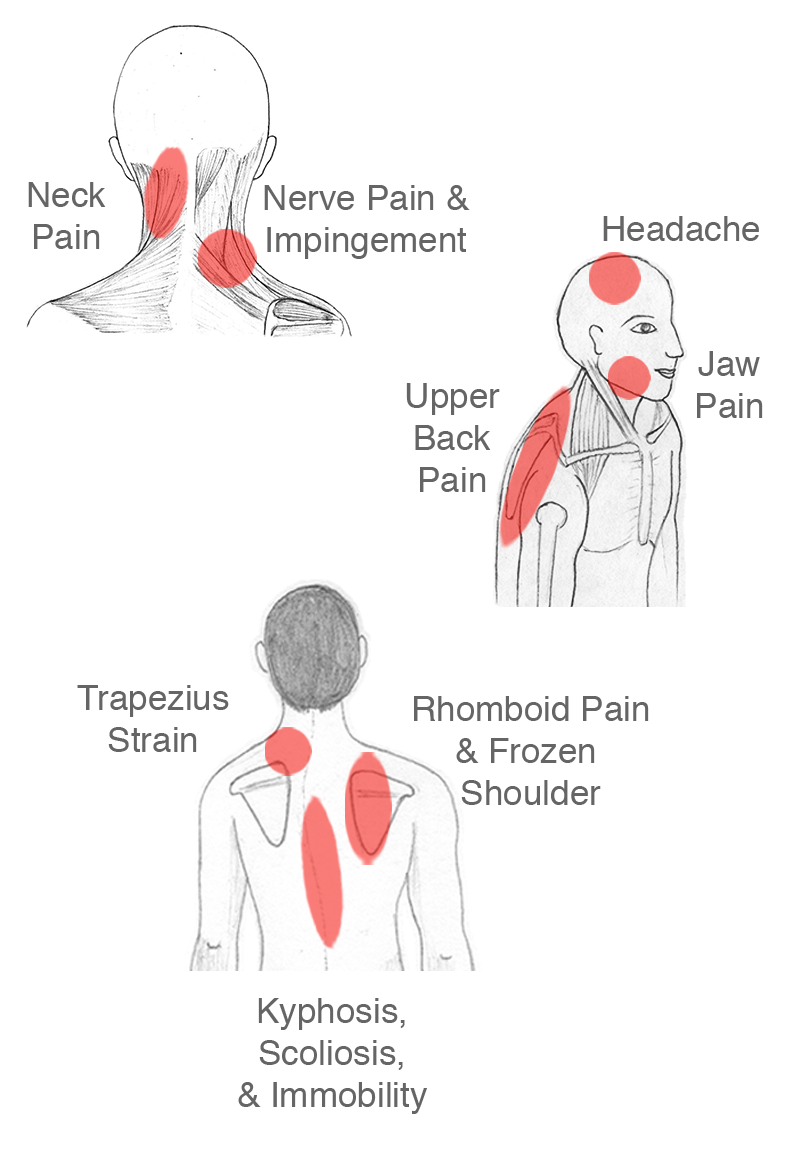
Jaw or Neck Pain
Common conditions causing Neck pain are neck strain, neck injury such as in Whiplash, a Herniated Disc, or a Pinched Nerve. Pain often comes from Anterior Shoulder, Chest and Neck muscle dominance and Chest muscle Compression. These areas are shortened in front, thus pulling forward on the neck and upper back causing pain.
Jaw pain causes include injury to the teeth or jaw, misalignment of the teeth or jaw, teeth grinding, poor posture, stress, Arthritis, and others, which can also result in Temporomandibular Joint (TMJ) syndrome.
Spinal Mis-Alignment can also often be the cause for Neck or Jaw Pain.
Upper Body Conditions
Typical conditions in the upper body are upper back pain and Kyphosis (hunched back), neck pain and limited mobility, trapezius dysfunction, jaw pain and headaches. These are often longterm chronic pains that may go away then return again, mainly because the source of the pain is actually coming from all the areas below. This area is the top of the pyramid and usually hurts the most when affected.

Upper Back Pain
Poor posture, overuse, muscle strain or injury to the muscles, ligaments and discs that support the spine, Arthritis, pinched nerve. These are only a few of the reasons that can cause pain in the Upper Back.
Upper Body Conditions
Typical conditions in the upper body are upper back pain and Kyphosis (hunched back), neck pain and limited mobility, trapezius dysfunction, jaw pain and headaches. These are often longterm chronic pains that may go away then return again, mainly because the source of the pain is actually coming from all the areas below. This area is the top of the pyramid and usually hurts the most when affected.

Shoulder Pain
Shoulder Pain and Rotator Cuff issues can be associated to a variety of conditions:
* Myofascial Tightness of Anterior Deltoids, Back, Chest, Neck, or Scapula
* Arthritis
* Bursitis (Bursae are small, fluid-filled sacs located in joints throughout the body)
* Joint Instability
* Tendinitis (or Tendonitis, tendon inflammation) and Tendinosis (tendon’s collagen degeneration)
* Tendon Tears
* Nerve Impingement
* and many more
Pain in the Shoulder can also be caused by Lower Arms or Elbows conditions.
Hand, Arm & Shoulder Conditions
There are many conditions in the Hands, Forearms, Elbows, Upper Arms and Shoulders that affect the body. This entire area demands a lot from the human body as we interact with the world mainly through our hands and arms. Many longterm painful issues like Carpal Tunnel or Tennis Elbow come from repeated use and poor posture, as on a computer with some sort of pressure on the hand or bad alignment in the wrist.
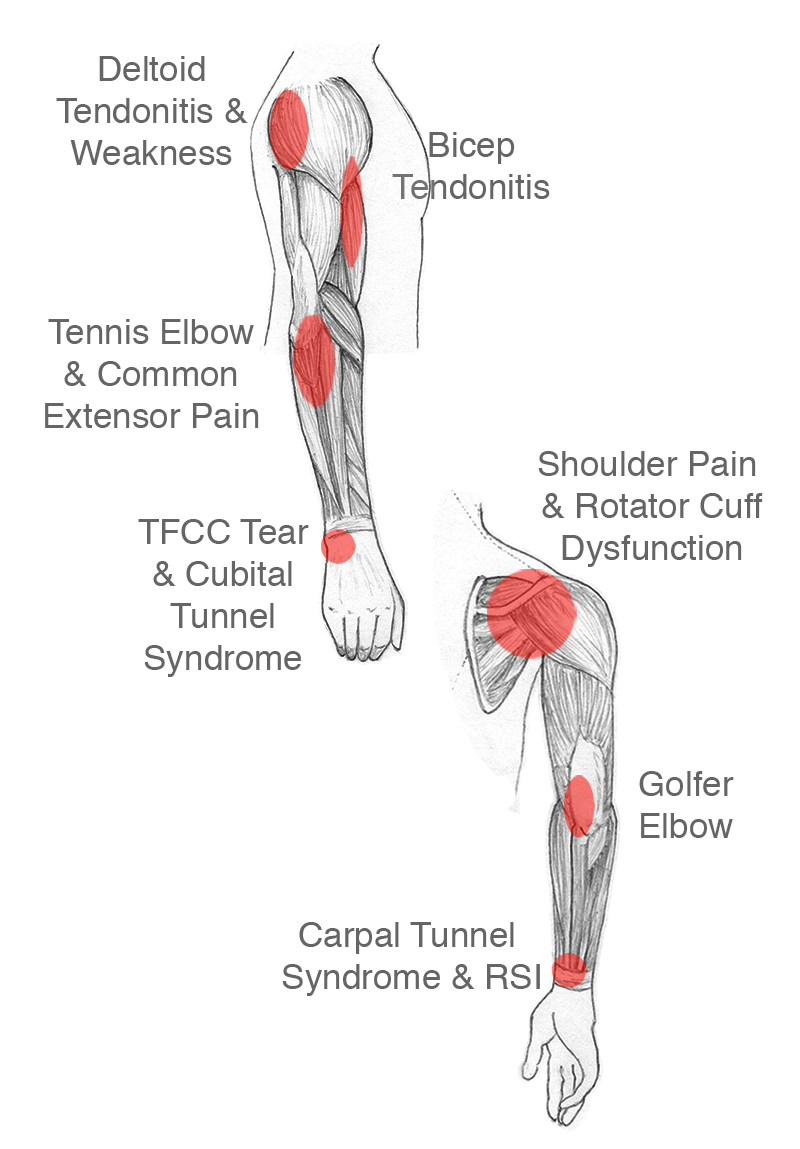
Elbow Pain
Typical pain in the outside of the elbow is called Tennis Elbow or Lateral Epicondylitis, when it affects the tendon near the Lateral Epicondyle bone, which becomes inflamed or painful and may also cause blockage to the Radial Nerve. Pain on the opposite side is known as Golfer Elbow, or Medial Epicondylitis. Both conditions are types of inflammation of a tendon, and both are commonly caused by Repetive Stress Injury (RSI) or overuse. Pain in the Elbow can also be caused by Lower Arms or Shoulders conditions.
Hand, Arm & Shoulder Conditions
There are many conditions in the Hands, Forearms, Elbows, Upper Arms and Shoulders that affect the body. This entire area demands a lot from the human body as we interact with the world mainly through our hands and arms. Many longterm painful issues like Carpal Tunnel or Tennis Elbow come from repeated use and poor posture, as on a computer with some sort of pressure on the hand or bad alignment in the wrist.

Lower Back Pain
There are many conditions that affect the Lower Back and most commonly the pain is due to a general cause, such as poor posture, muscle strain, injury or overuse. Sometimes Lower Back pain can be related to a disc that bulges or ruptures. If a bulging or ruptured disc presses on the sciatic nerve, pain may run from the buttock down one leg and cause Sciatica. Also other conditions of the spine can result in Lower Back pain, most commonly: Herniated Disc, Degenerative Disc Disease, Spondylolisthesis, Spinal Stenosis, Osteoarthritis.
Hip Extensor and Lower Back Conditions
Many people suffer from pain in and around the Hips, Gluts, Sacrum and Lower Back. Typically this area is weaker (compared to the Hip Flexors) and more affected by pain conditions. Sciatica is a very common one that may span multiple areas, as the Sciatic nerve is the largest nerve in the human body.
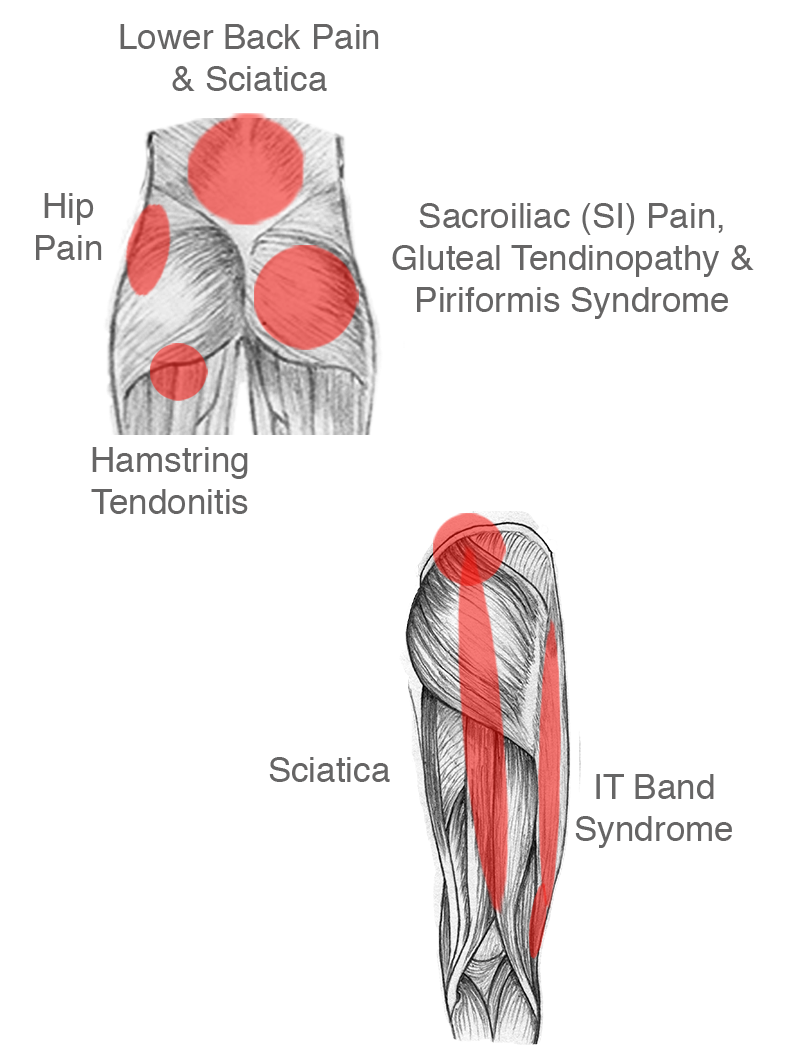
Anterior Hip Pain
Pain in the Anterior Hip area can be caused by:
* Adductor weakness, Femoral Nerve impingement (Frontal Sciatica), Inguinal Hernia, Groin Strain, etc.
* Tightened Iliopsoas & Abdominals from bowels, stress, excessive abdominal workouts
* Weak Hip Flexors, causing anterior hip rotation
* Arthritis or Cartilage Damage
* Vertebrae Displacement
* and many other conditions, not necessarily primarily associated with the Hips.
Hip Flexor and Knee Conditions
A number of conditions occur in the Quadriceps, Adductors, Abdominals and Iliopsoas, Knee Joint and Groin area. If the knee is not able to extend all the way or if it is knocked, there may be pain in the joint or problems in other areas of the body. The Hips also greatly affect the alignment of the Spine and overall mobility of the body.
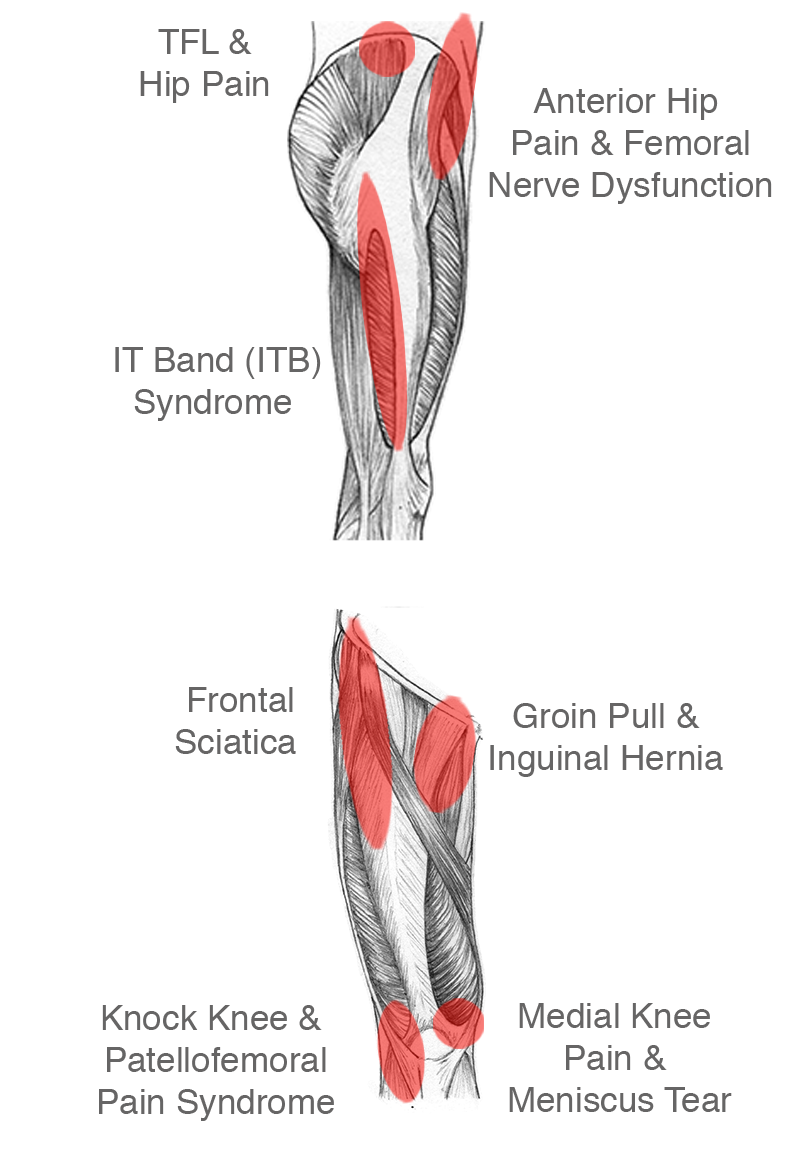
Wrist
Wrist pain can be associated with various conditions, such as Carpal Tunnel, Cubital Tunnel, Arthritis, etc. Many nerves can be affected by wrist mobility and each of them can also cause different problems in the hand and fingers. Pain in the Wrist can also be caused by Elbows or Shoulders conditions.
Hand, Arm & Shoulder Conditions
There are many conditions in the Hands, Forearms, Elbows, Upper Arms and Shoulders that affect the body. This entire area demands a lot from the human body as we interact with the world mainly through our hands and arms. Many longterm painful issues like Carpal Tunnel or Tennis Elbow come from repeated use and poor posture, as on a computer with some sort of pressure on the hand or bad alignment in the wrist.

Sciatica
The Sciatic Nerve can get impinged anywhere along the lumbar region, buttocks or hamstrings and cause pain in any of these areas. This condition usually affects one side of the body at a time and it is called Sciatica.
Hip Extensor and Lower Back Conditions
Many people suffer from pain in and around the Hips, Gluts, Sacrum, and Lower Back. Typically this area is weaker (compared to the Hip Flexors) and more affected by pain conditions. Sciatica is a very common one that may span multiple areas, as the Sciatic nerve is the largest nerve in the human body.

Knee
Knee conditions are numerous and can include:
* Knee Hyperextension or inability for full extension
* Knock Knees, which may be caused by tension coming from tight lateral quadriceps (muscle and fascia) or IllioTibial Band Syndrome (ITBS)
* Patello-Femoral Pain Syndrome (PFPS), which is usually caused by the knee cap tracking off to the lateral side instead of keeping centered in the femoral groove
* Arthritis, Cartilage Damage or Meniscus Tear
* and many others
Hip Flexor and Knee Conditions
A number of conditions occur in the Quadriceps, Adductors, Abdominals and Iliopsoas, Knee Joint and Groin area. If the knee is not able to extend all the way or if it is knocked, there may be pain in the joint or problems in other areas of the body. The Hips also greatly affect the alignment of the Spine and overall mobility of the body.

Calf Pain
Calf pain can result from a number of causes, including overworking the muscles and cramps. It can also result from very tight Shin muscles, since both the shin and calf work together to facilitate Ankle Flexion and Extension.
Feet, Ankle and Lower Leg Conditions
A number of conditions occur in the Feet and Lower legs including Achilles Tendonitis, Bunions, Shin Splints, Weak Ankles, etc. Our feet and lower legs connect us to the Earth and support our entire weight, thus greatly influencing the rest of the body when pain or immobility conditions exist in this area.
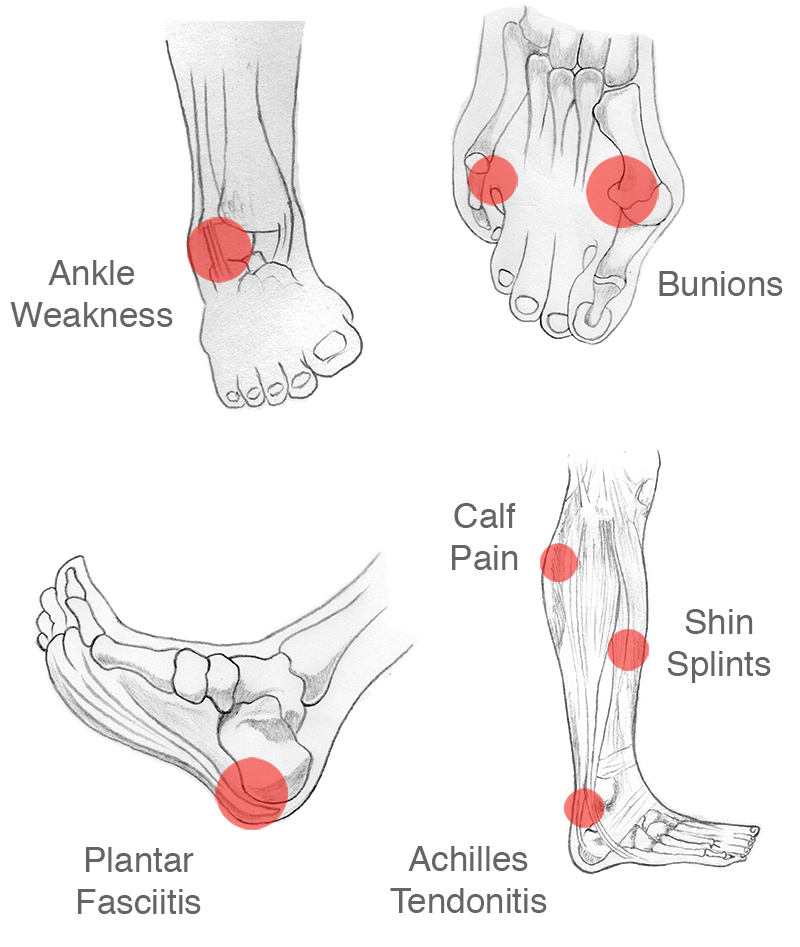
Ankle
Ankle sprains are common injuries that can limit the flexibility of the ankle joint and cause pain, together with other conditions that may affect this area, like Fractures or Arthritis. If ankles are very limited in flexibility, also foot mobility will likely be limited and knees and hips will be affected too.
Feet, Ankle and Lower Leg Conditions
A number of conditions occur in the Feet and Lower legs including Achilles Tendonitis, Bunions, Shin Splints, Weak Ankles, etc. Our feet and lower legs connect us to the Earth and support our entire weight, thus greatly influencing the rest of the body when pain or immobility conditions exist in this area.

Heel or Foot Pain
Plantar Fasciitis, Achilles and Peroneal Tendonitis, Bunions, Hammertoes, Cuboid Syndrome are all examples of conditions that can affect and cause pain in the feet. They are often related to the ankle ability to properly perform Ankle Inversion and Eversion.
Feet, Ankle and Lower Leg Conditions
A number of conditions occur in the Feet and Lower legs including Achilles Tendonitis, Bunions, Shin Splints, Weak Ankles, etc. Our feet and lower legs connect us to the Earth and support our entire weight, thus greatly influencing the rest of the body when pain or immobility conditions exist in this area.

2. Body Assessment
The second step is to check the alignment of the body while standing. We may also perform functional tests across specific muscles, joints or nerves involving Range of Motion or strength comparison.
A Standing Body Assessment has the person standing up with all their joints extended in a relaxed manner with the inside edges of the feet aligned in parallel. The center of the ankles should be aligned with the ASIS on both sides.
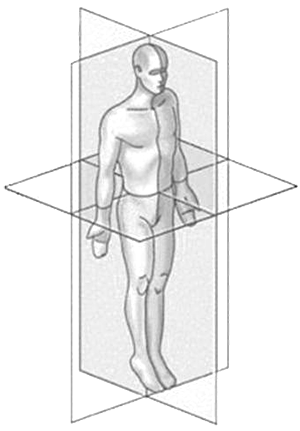 We assess the body in the classic “Three Anatomical Planes” in relationship to the pain reported.
We assess the body in the classic “Three Anatomical Planes” in relationship to the pain reported.
⟵ Click on a Body Area for more information
Upper Torso, Neck and Head Assessment
We check the balance and alignment for the head, in comparison to the chest, back and shoulder alignment, as they greatly influence each other.
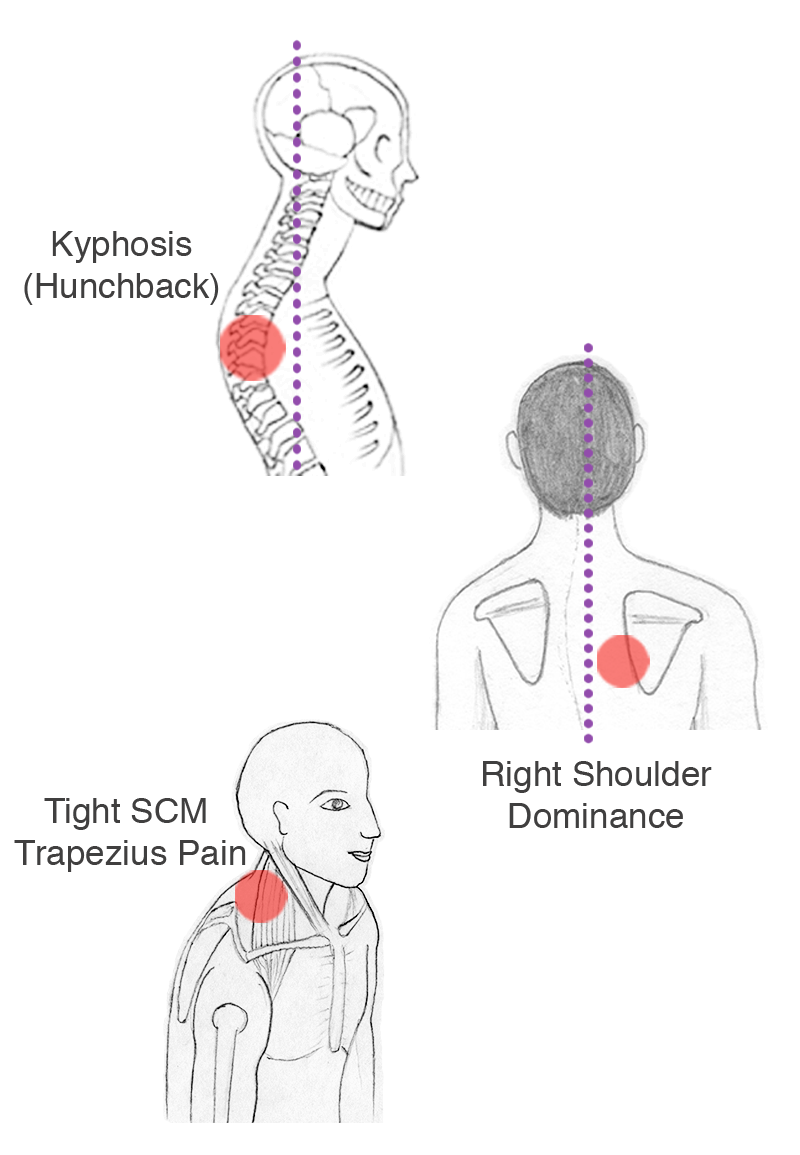
The typical neck and upper back pain come from Rounded Shoulder, with the neck Anteriorly Tilted in conditions described as Swan Neck and Kyphosis (Hunchback). These conditions are usually caused by anterior myofascial adhesions in the chest and neck, thus pulling downward and forward on the posterior neck, Trapezius and Levator Scapula. In many cases, the rounding of the back along with weak Neck Extensor Muscles makes the condition difficult to change without consistent exercise and posture rebalancing.
Right Shoulder Dominance may present a curve from one side or the other, showing where the dominant arm and chest are tighter and sinking down, which typically throws the neck off to the left with tension and pain in the left Trapezius and Neck.
Most conditions found in Shoulder Assessment may cause or contribute to problems in the Neck, as a shoulder pulling forward increases the tension on the Neck.
Arms and Shoulders Assessment
Many conditions in the shoulders, arms and elbows are often coming from muscular tension in the forearms, wrists and hands.
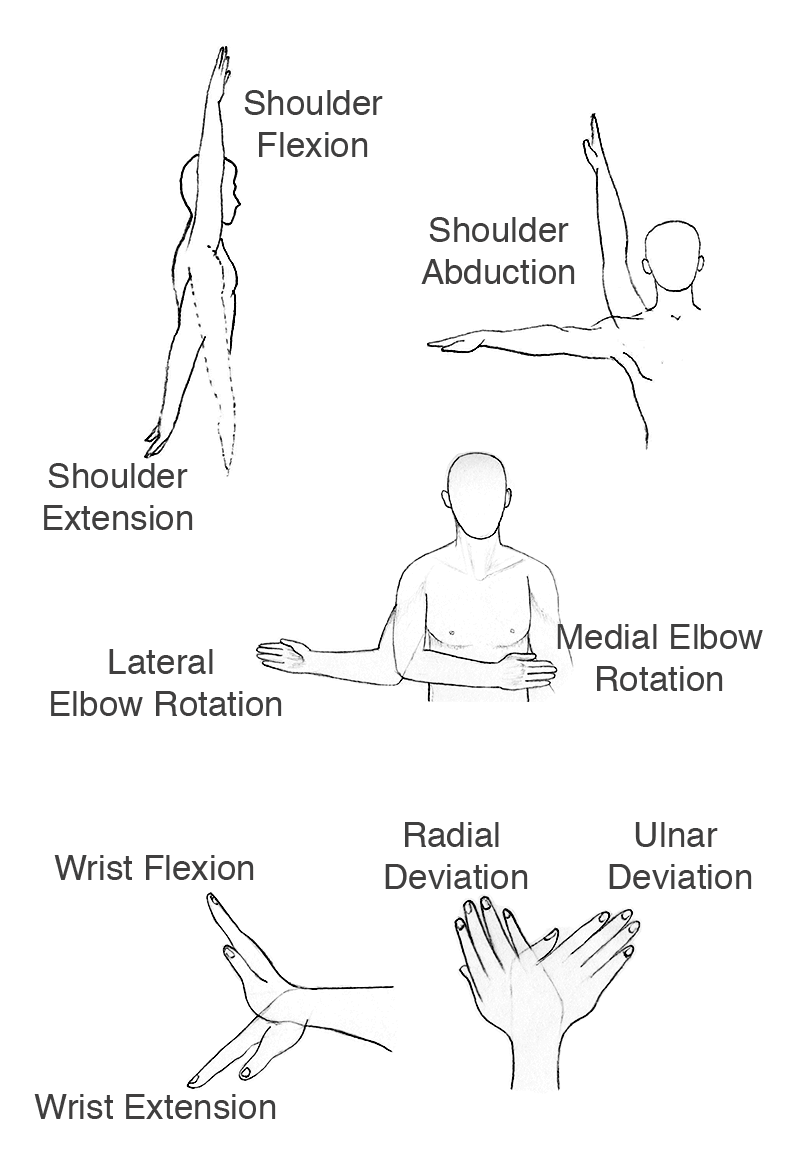
We test the shoulder in the basic movement positions for Flexion, Extension and Abduction. If a shoulder is painful, it may come from myofascial adhesions, nerve impingements, torn muscles or tendons, or the shoulder joint itself. The most common injury of the shoulder usually occurs in Supraspinatus, especially near the attachment to the Humerus Head.
We test the elbow mobility with Lateral Rotation and Medial Rotation. Limited rotation in either direction may show tightness in the Myofascial layers of the arm and elbow.
We check the hands and wrists in terms of range of motion and mobility: Flexion and Extension, Supination and Pronation, Radial Deviation and Ulnar Deviation. In many cases, the wrist extensors are over-used because of mobile phones, computers, or other repetitive activities.
Hip Extensors and Lower Back Assessment
A number of conditions can occur in the Hips, mostly coming from hips that are Swayback or Anterior Pelvic Tilt (Lordosis). The reason for the forward shift or tilt is often because of myofascial compression in the Quadriceps, Abdominals and Iliopsoas muscles.
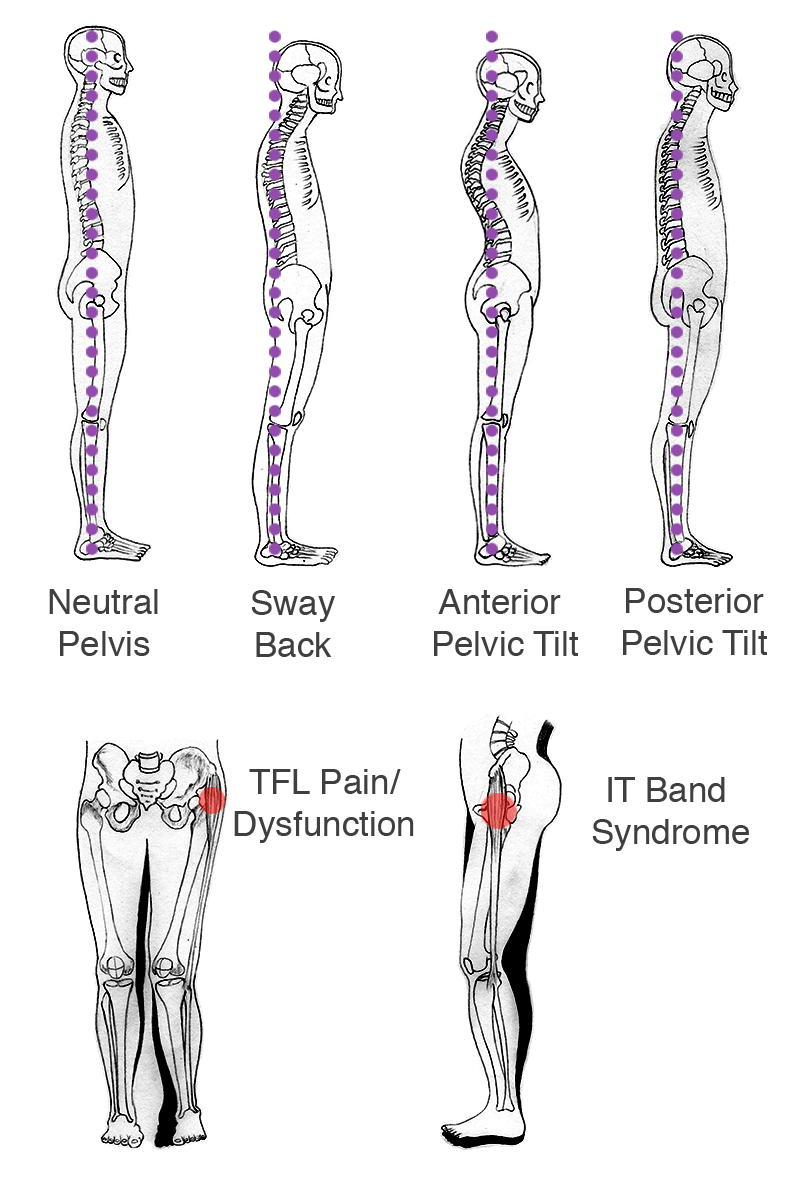
If there is Right or Left Hip Dominance, there is usually pain in the opposite Hip or Quadratus Lumborum (QL), Sciatica, pain or stiffness in the lower back and the spine can become misaligned all the way to the neck with the typical MD diagnosis of Scoliosis.
In many cases, the symptomatic pain occurs in the sacrum, lower back or hips due to the forward and downward pull on the hips. Sometimes the pain can refer into the groin or anterior hip, resulting in an Inguinal Hernia or Femoral Nerve Impingement (aka Frontal Sciatica).
Any conditions found in the Knee Assessment may cause or contribute to problems in the Hips or above.
Knees and Hip Flexors Assessment
Most knee issues come from myofascial adherence between muscles and from muscle dominance in the Lateral upper and lower leg, which causes the knee to be either Knocked (bent inward) or Medially Rotated.
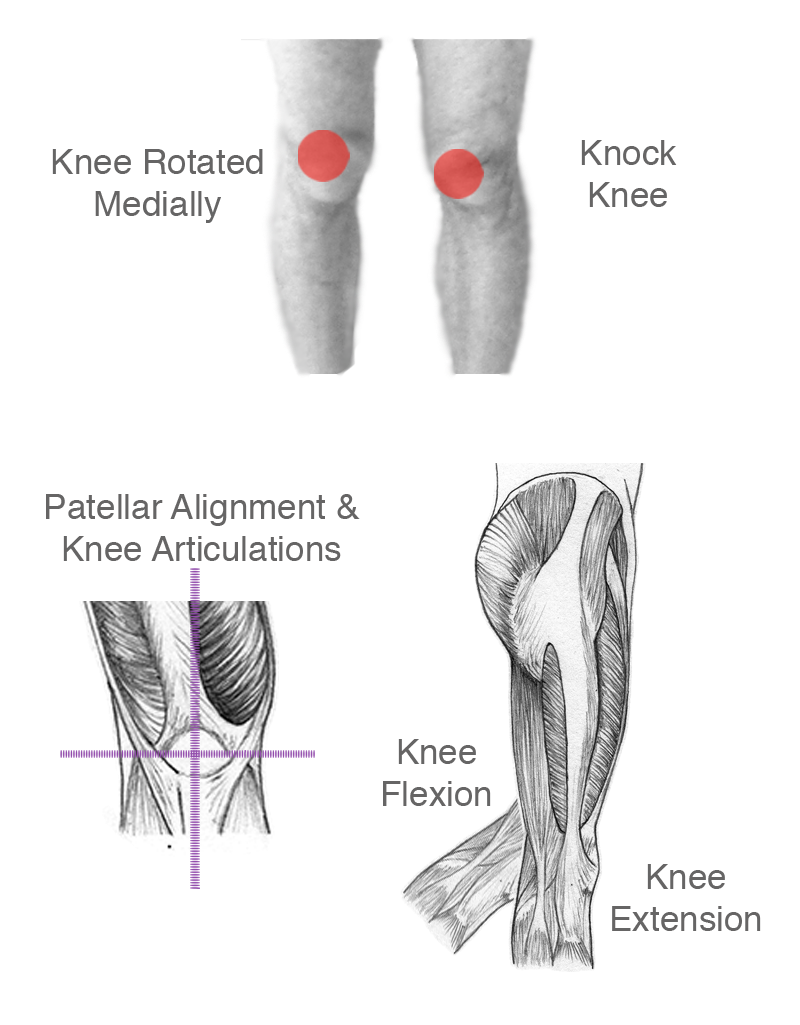
We check the Patella Alignment (and glide) along with the knee in the three Anatomical Planes.
Comparison of the ROM between the upper and lower leg may reveal limitations in Knee Flexion, Extension or Articulations due to imbalance of specific muscles and fascia, or nerve impingement.
Any conditions found in the Ankle Assessment may cause or contribute to problems in the Knees or above.
Firing timing issues and flexibility limitations with dominant and overused muscles may affect the tracking and function of either knee.
Feet and Lower Leg Assessment
First we check if the feet are either:
Pronated - falling more on the inside edge
Supinated - falling more on the outside edge
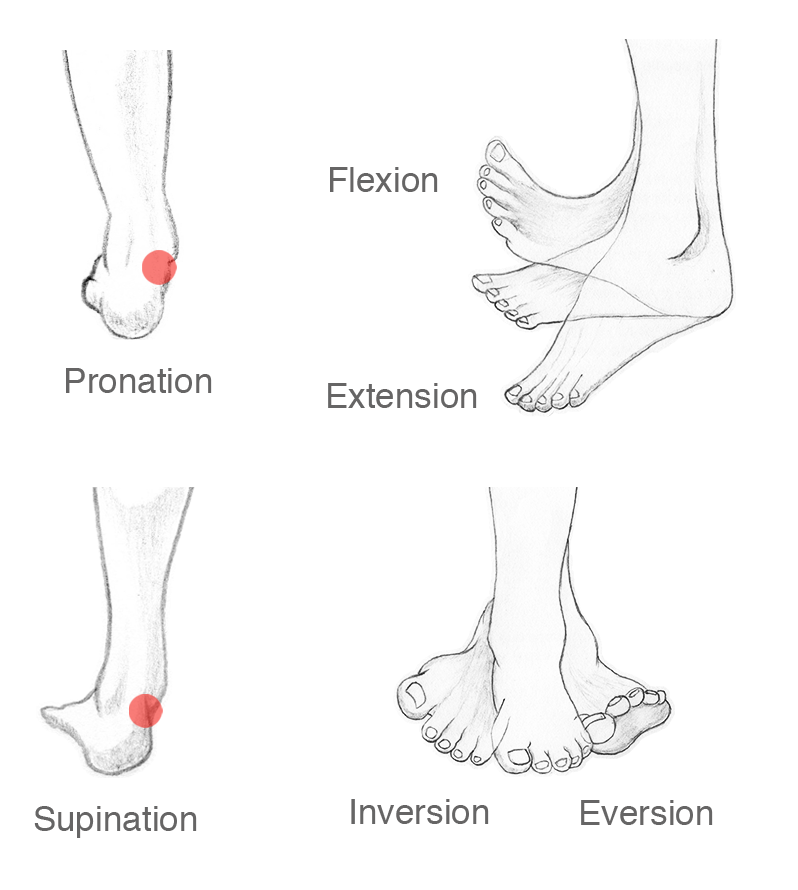
Pronation may increase tightness in the adductor groups or pressure on the medial knee due to the ankle and shin alignment falling inward. Pronation may reinforce Bunions and Hammertoes and lead to problems such as Achilles and Peroneal Tendonitis.
Supination may cause increased external (lateral) rotation force to be placed on the shin, knee and thigh, thus placing additional stress on the muscles, tendons and ligaments of the lower leg, sometimes causing Shin Splints, Plantar Fasciitis or mobility issues like Cuboid Syndrome.
Then we check ankle mobility via ROM tests. Proper Ankle Flexion, Extension, Inversion and Eversion are important to balance the feet, ankles and lower legs. Most likely the issues are coming from the Plantar surface of the feet, the Shins and Calves/Achilles tendon.
Imbalanced ankle and lower leg alignment or poor mobility may lead to problems in the knees or hips, back, or even the shoulders and neck as the majority of bodyweight is resting here.
3. SEA Bodywork
After assessing the body postural, we suggest receiving deep bodywork (similar to Structural Integration or Rolfing) to address the source(s) of the orthopedic-related condition(s).
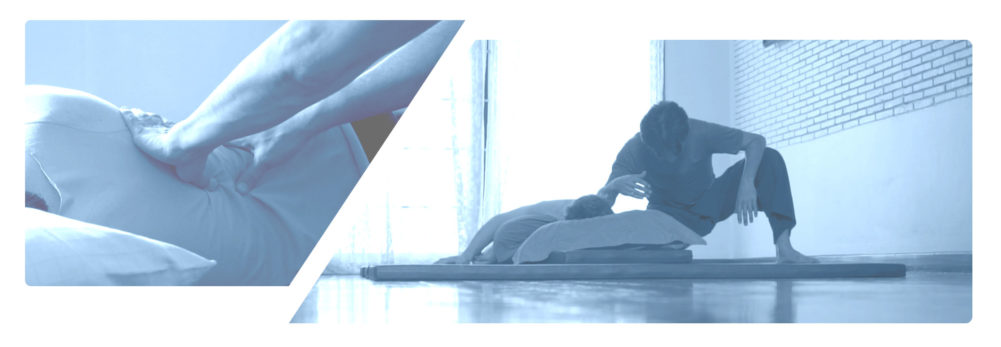
The main focus is upon releasing structural energy blockages, myofascial adhesions, rebalancing muscle tension, joint re-alignment and releasing nerve impingements. Remedy the problem(s) is a process of elimination of obstructing conditions to create lasting improvement in the body.
Some issues and limitations can be solved in minutes, while some deeper problems or longterm pain may require multiple bodywork sessions. After the Bodywork session(s), we are able to assess the orthopedic-related condition(s) more clearly and recommend the next steps.
4. Body Rebalancing, Education and Homework
Some cases may not involve pain or require more home exercise to improve, for all types of cases and people we start by recommending three categories of exercises:
Depending on the specific Orthopedic-related pain or problem condition, we usually recommend specific SEA Body Rebalancing Exercises that you can do as homework more frequently until the problem changes.
We find that the people who do their homework exercises more accurately and frequently for at least 1-2 months, are the ones who heal their condition sooner and have less problem reoccurrences.

